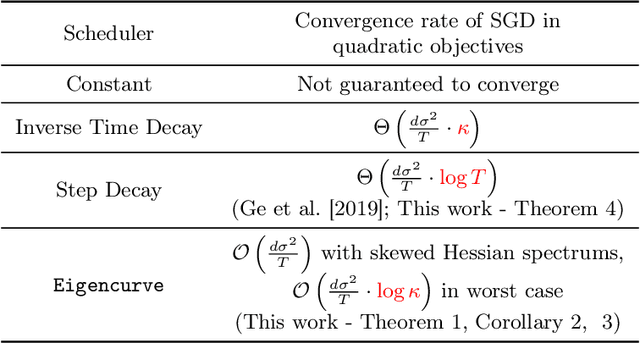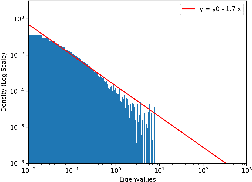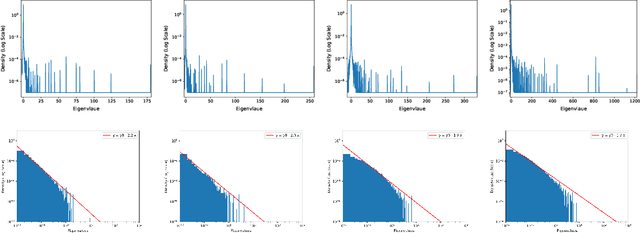Eigencurve: Optimal Learning Rate Schedule for SGD on Quadratic Objectives with Skewed Hessian Spectrums
Paper and Code
Oct 28, 2021



Learning rate schedulers have been widely adopted in training deep neural networks. Despite their practical importance, there is a discrepancy between its practice and its theoretical analysis. For instance, it is not known what schedules of SGD achieve best convergence, even for simple problems such as optimizing quadratic objectives. So far, step decay has been one of the strongest candidates under this setup, which is proved to be nearly optimal with a $\mathcal{O}(\log T)$ gap. However, according to our analysis, this gap turns out to be $\Omega(\log T)$ in a wide range of settings, which throws the schedule optimality problem into an open question again. Towards answering this reopened question, in this paper, we propose Eigencurve, the first family of learning rate schedules that can achieve minimax optimal convergence rates (up to a constant) for SGD on quadratic objectives when the eigenvalue distribution of the underlying Hessian matrix is skewed. The condition is quite common in practice. Experimental results show that Eigencurve can significantly outperform step decay in image classification tasks on CIFAR-10, especially when the number of epochs is small. Moreover, the theory inspires two simple learning rate schedulers for practical applications that can approximate Eigencurve. For some problems, the optimal shape of the proposed schedulers resembles that of cosine decay, which sheds light to the success of cosine decay for such situations. For other situations, the proposed schedulers are superior to cosine decay.
 Add to Chrome
Add to Chrome Add to Firefox
Add to Firefox Add to Edge
Add to Edge